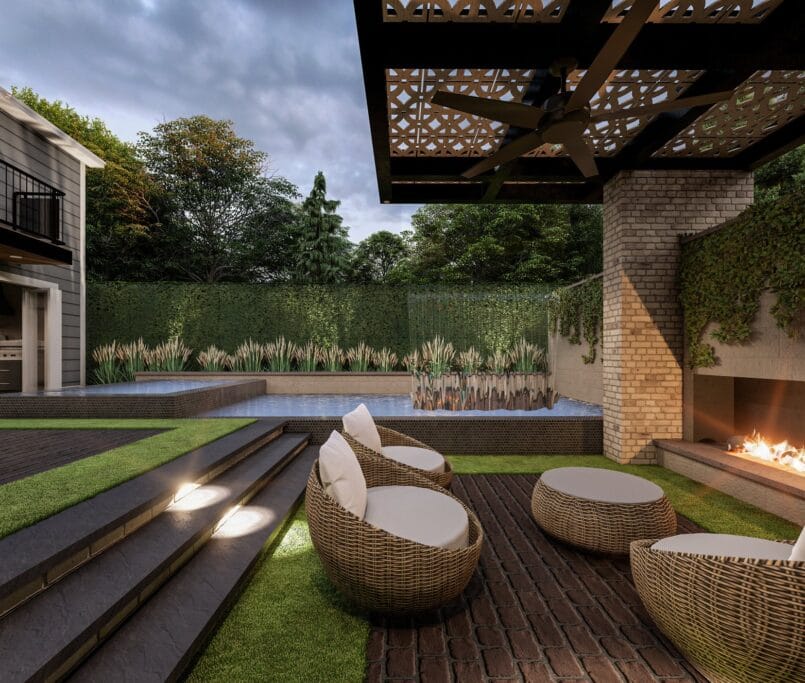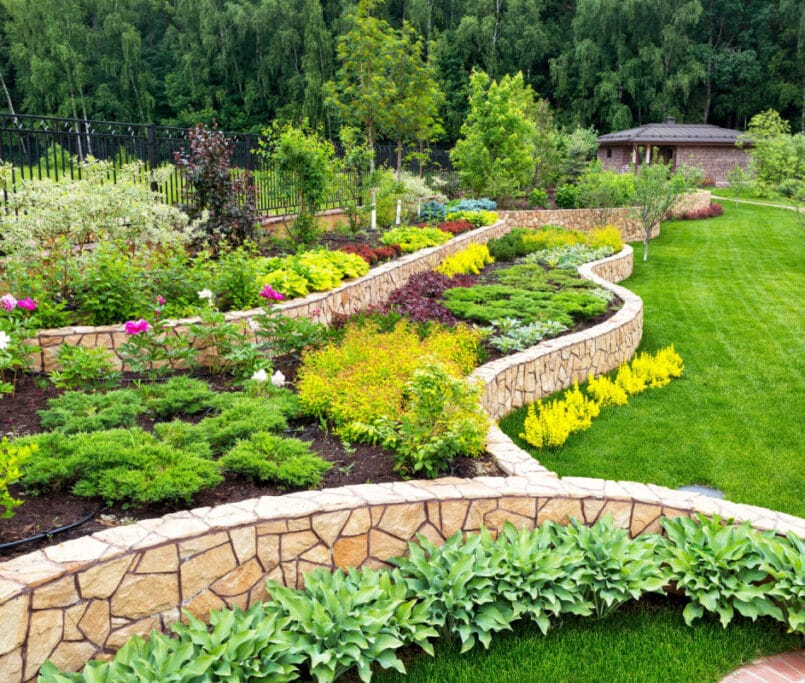Complete Guide to Landscaping Your Property
Landscaping is one of the most impactful ways to transform your property, adding both beauty and functionality to your outdoor space. Homeowners are embracing designs that combine aesthetic appeal with sustainability, smart technology, and purposeful use of every square foot. Whether you are starting from scratch or upgrading your existing landscape, understanding the process from planning to maintenance will save you time, money, and potential frustration. This guide brings together all the essential knowledge you need, including links to deeper resources for topics like landscape design, project timelines, cost breakdowns, and more, so you can navigate your landscaping journey with confidence.
1. Understanding Landscaping: The Basics
What Landscaping Involves
Landscaping is the art and science of arranging outdoor spaces to create harmony between natural elements like plants, lawns, and gardens, and built features such as patios, walkways, and retaining walls. It extends beyond simply planting flowers; it involves thoughtful planning to create functional spaces for entertainment, relaxation, and curb appeal. Modern landscaping also integrates irrigation systems, lighting design, and sustainable solutions that keep your property looking its best all year round.
Landscaping vs Hardscaping
One of the most important distinctions in the field is between landscaping and hardscaping. Landscaping generally refers to the living elements of your yard trees, shrubs, grass, and flowers while hardscaping covers the non-living features like stone patios, fences, and water features. These two aspects work together to create a complete outdoor environment. To better understand the difference between these two essential aspects, check out our detailed post on landscaping vs hardscaping, which explores the roles each plays in creating balance and structure in your outdoor space.
2. Planning Your Landscaping Project
Assessing Your Space
Before a shovel touches the ground, it’s crucial to evaluate the current state of your property. A professional site analysis will look at factors like sunlight patterns, soil quality, drainage, and any existing features you want to keep or remove. This step sets the foundation for a design that is not only beautiful but also practical and sustainable.
Creating a Vision
Every successful landscaping project begins with a clear vision. This means thinking about how you want to use your space whether for entertaining guests, creating a quiet retreat, or adding play areas for children. Collect inspiration from online galleries, home improvement shows, and local properties. By identifying the mood and purpose you want for your yard, you can guide design choices more effectively.
Budgeting for Success
Setting a realistic budget ensures you get the results you want without overspending. Landscaping costs vary widely depending on the size of the area, the complexity of the design, and the materials used. For a breakdown of how much landscaping costs per square foot, see our in-depth guide here, which explains cost ranges for different project types and finishes.
3. Landscape Design and Its Importance
What Is Landscape Design and What Does It Include
Landscape design is the blueprint for your outdoor space, detailing everything from plant placement to structural features. A good design considers how different elements work together to create a cohesive and functional environment. We’ve covered the full details of what landscape design is and what it includes in this article, where you’ll find a deeper look at how design choices affect long-term usability and appeal.
The Role of Professional Designers
While some homeowners enjoy tackling design on their own, working with a professional offers several advantages. Designers have a trained eye for balance, proportion, and color harmony, as well as knowledge of plant species that thrive in your local climate. In 2025, technology plays a significant role, with many professionals using advanced software to create 3D renderings that allow you to see your landscape before construction begins. This level of precision reduces guesswork and ensures that your investment yields the results you envision.
4. Choosing Between DIY and Professional Landscaping
For many homeowners, the first major decision is whether to tackle landscaping as a DIY project or to hire a professional team. Doing it yourself can be appealing for smaller projects, especially if you enjoy hands-on work and have the necessary tools. DIY landscaping can save on labor costs, but it also comes with challenges. Large-scale projects often require specialized skills, heavy equipment, and a deep understanding of plant care, construction, and drainage.
Hiring a professional landscaper ensures that your design is implemented correctly, efficiently, and in compliance with local regulations. Professionals can also anticipate and avoid common pitfalls that lead to costly fixes later. If you’re deciding between doing it yourself or hiring an expert, our guide on DIY vs professional landscaping will help by outlining the pros, cons, and scenarios where professional expertise is worth the investment.
5. Step-by-Step Landscaping Process
A well-executed landscaping project follows a structured process. While specific steps may vary depending on the size and scope of the job, the core phases remain consistent.
Initial Consultation & Site Analysis
The process begins with a consultation where you share your goals, preferences, and budget with your landscaping team. This is followed by a thorough site analysis, where soil conditions, sunlight exposure, drainage patterns, and existing structures are evaluated.
Design & Planning
Once the site is assessed, the design phase begins. This involves creating preliminary concepts, refining them based on your feedback, and finalizing a detailed plan. This stage ensures that every element is accounted for before construction starts.
Permits & Approvals
Some landscaping projects require permits, particularly if they involve structural elements like retaining walls, decks, or water features. In neighborhoods with a Homeowners Association, design approval may also be necessary.
Pre-Construction Preparation
Before the actual work begins, your landscaper will order materials, schedule labor, and prepare the site. This might involve clearing debris, grading the land, or marking out key areas for installation.
Installation & Construction
This is the stage where your vision starts to take shape. Hardscaping elements like patios, walkways, and retaining walls are installed first, followed by softscaping — planting trees, shrubs, flowers, and laying sod. Irrigation systems and lighting are often added during or after planting.
Project Wrap-Up
Once construction is complete, a final walkthrough is conducted to ensure everything matches the agreed-upon plan. Any adjustments are made at this time, and your landscaper may provide maintenance guidelines to help you care for your new outdoor space.
6. Project Timelines and What to Expect
Understanding how long a landscaping project takes is critical for setting expectations and planning around your schedule. Timelines vary depending on the size and complexity of the project, the time of year, and the availability of materials. Smaller projects may take just a few weeks, while larger or more intricate designs can span several months.
Weather conditions can significantly impact progress, especially if heavy rains, extreme heat, or frost occur during construction. Seasonal demand also plays a role spring and early summer tend to be peak times for landscaping services, which may extend wait times before work begins.
For a more detailed breakdown of how long residential landscaping projects take, see our full timeline guide, where we explain typical durations for each stage of the process and the factors that can cause delays or speed things up.
7. Trends in Landscaping for 2025
Landscaping in 2025 blends creativity, sustainability, and technology in ways that elevate both beauty and practicality. Homeowners are increasingly looking for designs that work with the environment rather than against it, and the latest trends reflect this shift.
Sustainable Landscaping
Sustainable landscaping is no longer a niche preference; it is becoming the standard. This includes the use of native plants that require less water and maintenance, as well as rain gardens that naturally manage stormwater runoff. Permeable pavers are gaining popularity for driveways and walkways, allowing water to filter through rather than contribute to drainage problems.
Outdoor Living Spaces
Yards are evolving into fully functional extensions of the home. In 2025, outdoor kitchens, fire pits, pergolas, and multi-purpose patios are in high demand. These features create year-round usability, making it easy to host gatherings or simply relax in comfort.
Smart Technology in Landscaping
Technology is playing a bigger role in outdoor spaces. Automated irrigation systems that adjust based on weather data help conserve water while ensuring plants get exactly what they need. App-controlled lighting systems allow homeowners to set moods or highlight features at the touch of a button. These advancements not only add convenience but also enhance the long-term value of your property.
8. Maintaining Your Landscape
A beautiful landscape is an investment that requires ongoing care. Maintenance ensures that plants stay healthy, hardscape elements remain in top condition, and your yard continues to look its best in every season.
Seasonal Maintenance
Each season has its own landscaping needs. Spring is often focused on planting, mulching, and preparing the soil, while summer requires consistent watering and pest control. In autumn, pruning and leaf cleanup help prepare plants for the colder months, and winter may involve protecting sensitive plants from frost and checking structures for damage.
Long-Term Care
In addition to seasonal work, long-term care involves tasks like aerating lawns, fertilizing plants, and replacing any damaged or worn-out materials. Regular inspections of irrigation and lighting systems are also important to keep everything running efficiently. A proactive maintenance plan not only keeps your yard looking great but also prevents costly repairs or replacements down the road.
9. Working with Grand Building Construction
Choosing the right landscaping partner is crucial to the success of your project. At Grand Building Construction, we bring years of expertise, creative vision, and meticulous project management to every job. Our team works closely with you from the first consultation to the final walkthrough, ensuring your outdoor space reflects your style and serves your needs.
We pride ourselves on efficient scheduling, attention to detail, and the ability to adapt to challenges without compromising quality. Whether you are interested in a modern, minimalist design or a lush, traditional garden, we have the experience and resources to make it happen. Our relationships with trusted suppliers mean faster access to high-quality materials, and our skilled crews ensure precise execution at every step.

Contact US
Landscaping your property is one of the most rewarding investments you can make in your home. It enhances curb appeal, increases property value, and creates an outdoor environment you can enjoy for years to come. The key to success lies in careful planning, skilled execution, and proper maintenance — all of which are at the heart of our approach at Grand Building Construction.
If you are ready to transform your outdoor space in 2025, now is the perfect time to start. Contact Grand Building Construction today to schedule your consultation and take the first step toward creating a landscape that is as functional as it is beautiful. Let us help you bring your vision to life with precision, creativity, and unmatched craftsmanship.




